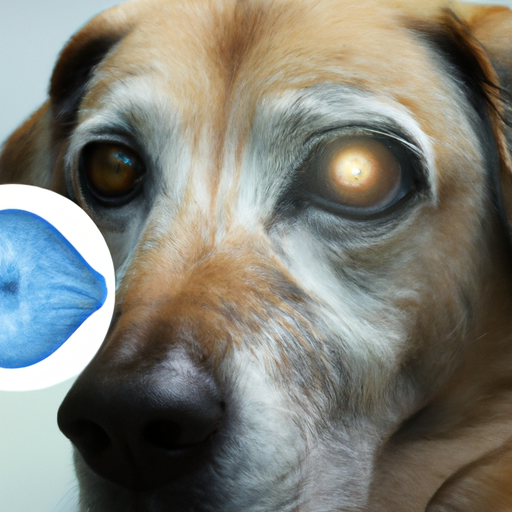As a caregiver, you’re likely to have noticed a certain cloudiness in your dog’s eyes at some point. What does it mean? Why does it happen? Let’s explore this in more detail.
1. Understanding A Dog’s Eye Structure
First, you need to understand how a dog’s eye is structured. Much like human eyes, dogs have a lens located behind their pupil. This lens is clear, allowing light to pass through and reach the retina. However, as your dog ages, changes may occur, leading to cloudiness.
Table: Basic Eye Structure in Dogs
| Part | Function |
|---|---|
| Cornea | The clear, outer layer of the eye. |
| Iris | The colorful part of the eye that controls the amount of light that enters. |
| Pupil | The black center part that allows light to enter the eye. |
| Lens | Located behind the pupil, it focuses light onto the retina. |
| Retina | The inner layer of the eye that sends images to the brain. |
2. The Common Reasons for Cloudiness
Several conditions can cause your dog’s eyes to become cloudy. These include:
- Cataracts: This is a common condition in older dogs, where the lens becomes opaque, causing cloudiness.
- Nuclear Sclerosis: Often mistaken for cataracts, this is a normal aging change that causes the lens to appear cloudy.
- Glaucoma: This condition is caused by increased pressure in the eye, leading to cloudiness.
3. Symptoms To Look Out For
As a caregiver, you need to be observant. While cloudiness may be the most obvious sign, other symptoms may indicate a more serious condition. These include:
- Redness or inflammation
- Excessive tearing or discharge
- Squinting or discomfort
- Changes in behavior, such as bumping into things
4. Treatment Options
Once you’ve noticed any of these symptoms, it’s important to consult a veterinarian. They will conduct a thorough examination and may suggest one or more of the following treatments:
- Medication: Eye drops or ointments to treat infection or inflammation.
- Surgery: In severe cases, surgical removal of the cloudy lens may be necessary.
- Management: In the case of conditions like Nuclear Sclerosis, no treatment may be necessary. Instead, adjustments to their environment can help them navigate better.
5. Preventive Measures
While you can’t prevent natural aging changes like Nuclear Sclerosis, some steps can help maintain your dog’s eye health:
- Regular vet check-ups
- A balanced diet rich in antioxidants
- Protecting their eyes from harsh sunlight or irritants
FAQs
Q: Can cloudiness in my dog’s eyes lead to blindness?
A: While it can potentially reduce vision, not all forms of cloudiness lead to complete blindness. It’s crucial to get a professional diagnosis.
Q: Can I use human eye drops for my dog?
A: No, always consult with a vet before using any medication on your dog.
Q: How often should I check my dog’s eyes?
A: A quick daily check is recommended, with a detailed inspection at least once a week. Regular vet check-ups are also essential.
With the above information, you’re now equipped to better understand and care for your dog’s eyes. Remember, early detection and treatment can make all the difference, so keep a vigilant eye on your furry friend’s peepers!



